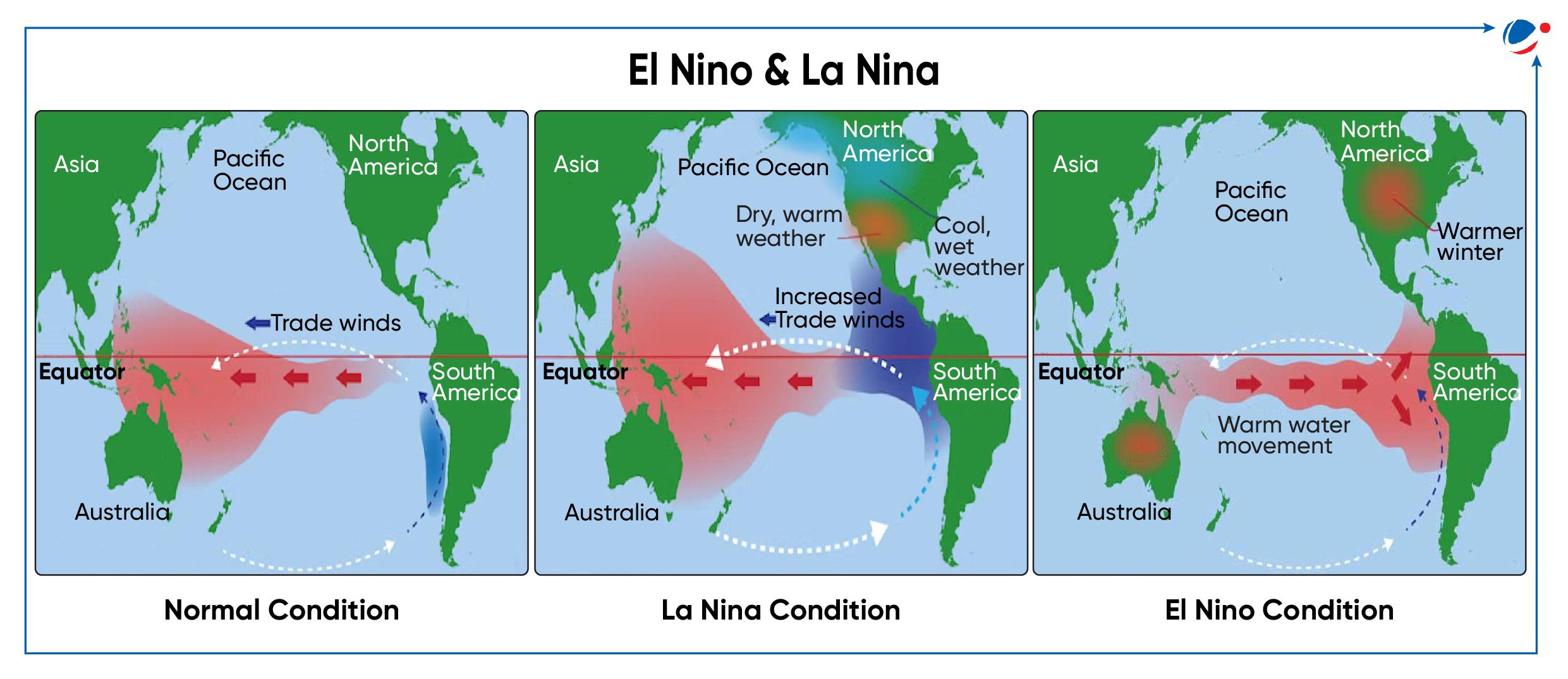Why in the News?
A recent study has revealed that the unprecedented triple dip La-Niña had peculiar impact on air quality in peninsular as well as North India.
More on the News
- The recent triple-dip La Niña conditions (2020–2023) had widespread impacts on the ocean and climate across the globe.
- During the winter of 2022–23 that coincided with retreating phase of the triple dip La-Niña, India experienced a peculiar trend in Air Quality:
- Poor Air quality in peninsular India: The dominance of higher northerly wind in the transport level forces influx and relatively slower winds near the surface, trapping pollutants and notably increasing PM2.5 concentration.
- Improved Air quality in North India: Weaker western disturbances, and unique wind patterns with the absence of rain and clouds and faster ventilation led to a significant improvement in air quality in the North.
- Observations were contrary to trends seen in recent decades, where in winter northern parts of country witness increased pollution levels.
About Triple dip La Niña
- A triple-dip La Niña is a rare event that occurs when the La Niña effect lasts three years in a row.
- La Niña is a phase of the El Niño Southern Oscillation (ENSO).
About El Niño Southern Oscillation (ENSO)

|
Factors responsible for the uniqueness of the triple-dip La Niña of 2020–2023
- The 2020–2023 triple-dip La Niña was distinct as it did not follow a strong El Niño, causing researchers to reevaluate current understanding of development of extended La Niñas.
- So far, it was believed that strong El Niños cause a significant loss of heat from the equatorial Pacific Ocean to the atmosphere and to higher latitudes.
- This creates a large ocean heat deficit that can take years to recover.
- So far, it was believed that strong El Niños cause a significant loss of heat from the equatorial Pacific Ocean to the atmosphere and to higher latitudes.
- Possible explanation for 2020-23 Triple dip La Niña
- Inter-basin interaction of ENSO: ENSO – which was previously thought to be driven by processes primarily occurring within the tropical Pacific Ocean basin – is more susceptible to inter-basin interactions involving the Indian and Atlantic Oceans.
- North and South Pacific Ocean: Many recent studies have also argued that influences from the North and South Pacific Ocean may play an important role in promoting prolonged La Niña events.
- Bush fire in Australia: It has even been suggested that smoke from the extensive Australian bushfires in 2019–2020 may have helped to trigger the recent La Niña.
- Climate change: A recent comparative study of the 1998–2001 and 2020–2023 triple-dip La Niñas concluded that changing conditions in the tropical Pacific Ocean and atmosphere, possibly due to climate change, could be altering the character of El Niño and La Niña events.
- Such changes could be tilting the odds towards more strong multi-year La Niña events.
Conclusion
The 2020–2023 triple-dip La Niña and recent studies on it underscore the idea that there may be significant sources of ENSO variability originating outside the tropical Pacific Ocean and that we need a more global approach for understanding and predicting ENSO cycle variations.



